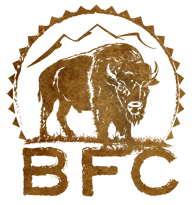The IUCN cites a number of serious threats to the conservation of plains bison such as: habitat loss; genetic manipulation of commercial bison for market traits; small population effects in most conservation herds; lack of exposure to a full range of natural limiting factors; cattle gene introgression; loss of genetic non-exchangeability through hybridization between bison subspecies; and the threat of depopulation as a management response to infection of some wild populations hosting reportable cattle diseases. In particular, the IUCN cites culling of bison populations to prevent spread of bovine diseases as a major threat to their conservation. 1 Yet it continues each year...
Genomic extinction poses one of the most imminent threats to bison conservation. Bison are at extremely high risk of genomic extinction because of domestication and anthropogenic selection, and hybridization with cattle (Freese et al. 2007). More than 95% of “bison/buffalo (nearly all beef-alo) exist under private ownership and are subject to agricultural practices which promote anthropogenic selection for traits to meet the market standards of the commercial bison industry (Freese et al., 2007). There is widespread evidence of hybridization with cattle among private bison herds. Selection for particular traits which may be conferred by cattle alleles has the potential to increase current levels of introgression (Ward et al., 1999; Halbert, 2003; Halbert et al., 2005; Freese et al., 2007; Halbert and Derr, 2007). Evidence of hybridization with cattle has now been found in all major conservation herds except for the Yellowstone bison. As such, the Yellowstone bison are the last remnant of genetically intact plains bison. 3, 16, 13, 17, 18
Human activities have led to large increases in the atmospheric concentration of heat-trapping gases, which is changing the climate in Greater Yellowstone. According to Saunders et al. (2012) in Greater Yellowstone, the last decade was 1.4°F above the region’s 20th century average. Summer temperatures in Greater Yellowstone have gotten hotter by an even larger margin, with the summers of the past decade 2.3°F above the average for 20th century summers. Yellowstone National Park has documented that precipitation has been declining as temperatures have been increasing (Yellowstone Center for Resources, 2013). Thus as the climate dries, more bison will move out of the park, and as they leave the park, they will be hazed and killed. 19, 20









